A year into Russia’s invasion of Ukraine, there’s no end in sight. Here’s how we got here.
Ukraine #Ukraine

LONDON — As tens of thousands of Russian troops lined up along Ukraine’s eastern and northern borders for “military exercises” last February, some international observers warned that Russia was about to do the unthinkable.
President Joe Biden had declassified intelligence in the weeks prior that showed an attack on Ukraine’s sovereignty was imminent. That intel was shared with allies, in an attempt to rally support and to stop the war, but the effort proved unsuccessful. The invasion began on Feb. 24, 2022.
“Russia alone is responsible for the death and destruction this attack will bring, and the United States and its Allies and partners will respond in a united and decisive way,” Biden said as troops crossed the border. “The world will hold Russia accountable.”
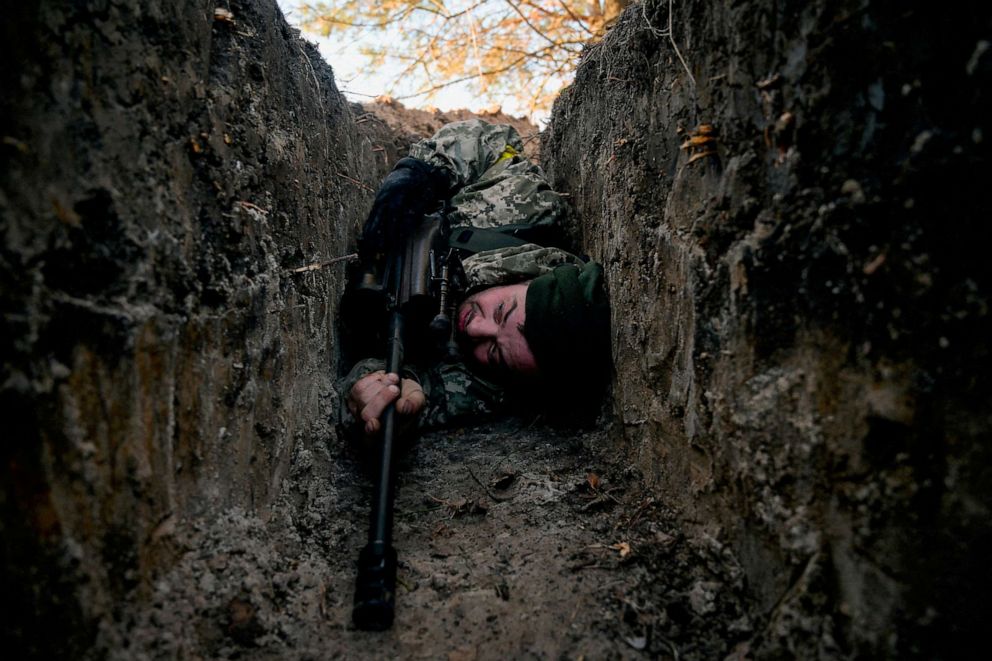
A Ukrainian soldier hides from a helicopter air strike amid Russia’s invasion of Ukraine, near Demydiv, Ukraine, March 10, 2022.
Maksim Levin/Reuters
The following four seasons have seen some of the bloodiest fighting on European soil in generations. Tens of thousands of Russian and Ukrainian troops have been killed. And Ukrainian civilians have been terrorized by missiles aimed at energy infrastructure, city centers and apartment buildings.
Belarus President Alexander Lukashenko, who allowed Putin’s troops to amass in his country prior to the invasion, told local media in the days before the “special military operation” began that it would take just a few days for Russian troops to take over the Kyiv, the capital.
But Ukrainian forces have blunted Russian advances on multiple fronts, defending their country against a military that had been expected to be better trained, more modern and more powerful. And a year of war in Europe has helped solidify international alliances, with NATO members maintaining their own united front.
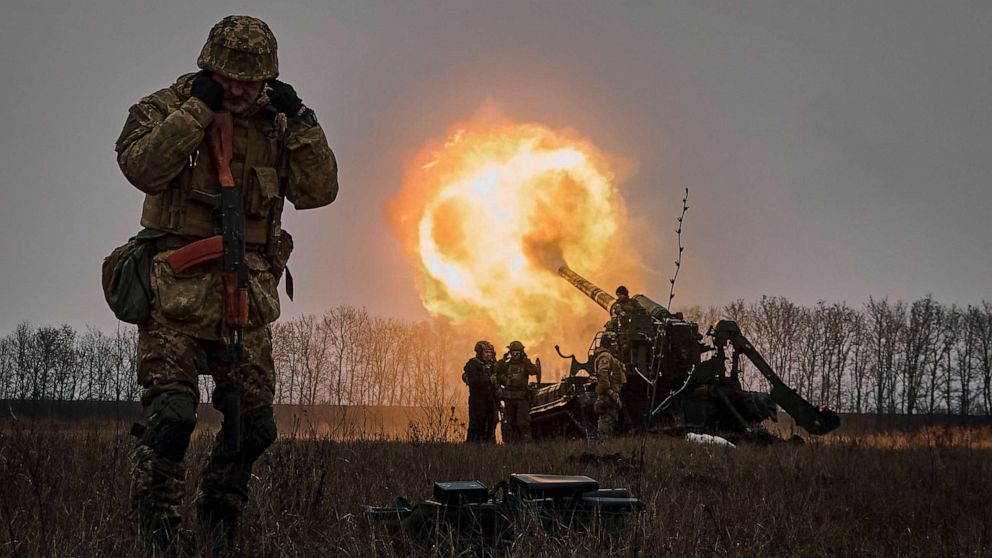
Ukrainian soldiers fire a Pion artillery system at Russian positions near Bakhmut, Donetsk region, Ukraine, Friday, Dec. 16, 2022.
Libkos/AP
“You know, one year later, Kyiv stands and Ukraine stands. Democracy stands,” Biden said on Monday, after arriving by train in Kyiv. His presence in the besieged capital amounted to one of the clearest symbols yet of the West’s dedication to stopping Russian aggression.
“The Americans stand with you, and the world stands with you,” he said.
But Putin has appeared unwavering in his resolve. He spoke in Moscow on Tuesday, saying in a state-of-the-union speech that he’d attempted to reason with the West. He said he’d been forced into the war.
“We are not at war with the people of Ukraine,” Putin said, adding, “They became a hostage of their regime and their Western masters.”
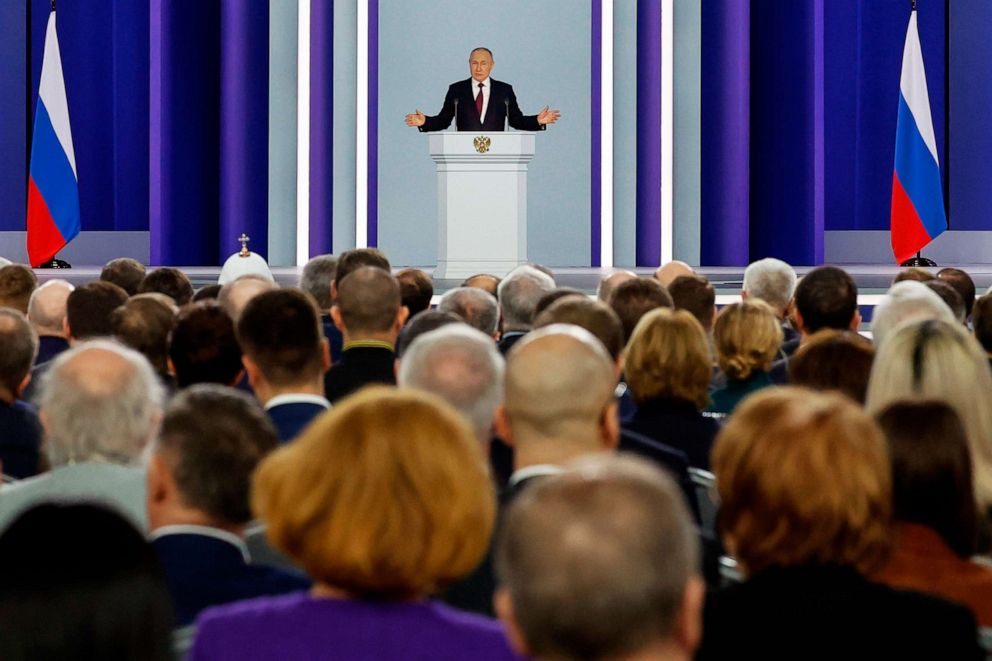
Russian President Vladimir Putin gestures as he gives his annual state of the nation address in Moscow, Russia, Feb. 21, 2023.
Dmitry Astakhov/AP
The Russian leader has a deep appreciation for Russian history and has a singular focus: reconstituting a once-expansive Russian Empire, observers say. This invasion amounted to another in a series of attempts to piece together now-sovereign nations that at one point were linked under a Russian ruler.
“Russian President Vladimir Putin appears to be fixated on the idea of reviving Russia’s greatness through the conquest of new territories and thus extending his rule,” Olena Nikolayenko, a professor and Political Science chair at Fordham University, told ABC News.
This month marks both the 9-year anniversary of Putin’s invasion of Crimea, which he illegally annexed in 2014, and the first anniversary of his full-scale invasion of Ukraine.
The ends to which he’d go in his mission to capture Ukraine have become clear in the last year.
International observers have documented a year of brutal killings by Russian forces, including the slaughter of civilians in towns like Bucha, Borodyanka and Mariupol. A campaign of missile attacks throughout Ukraine destroyed power stations, plunged much of Ukraine into darkness and targeted apartment buildings.
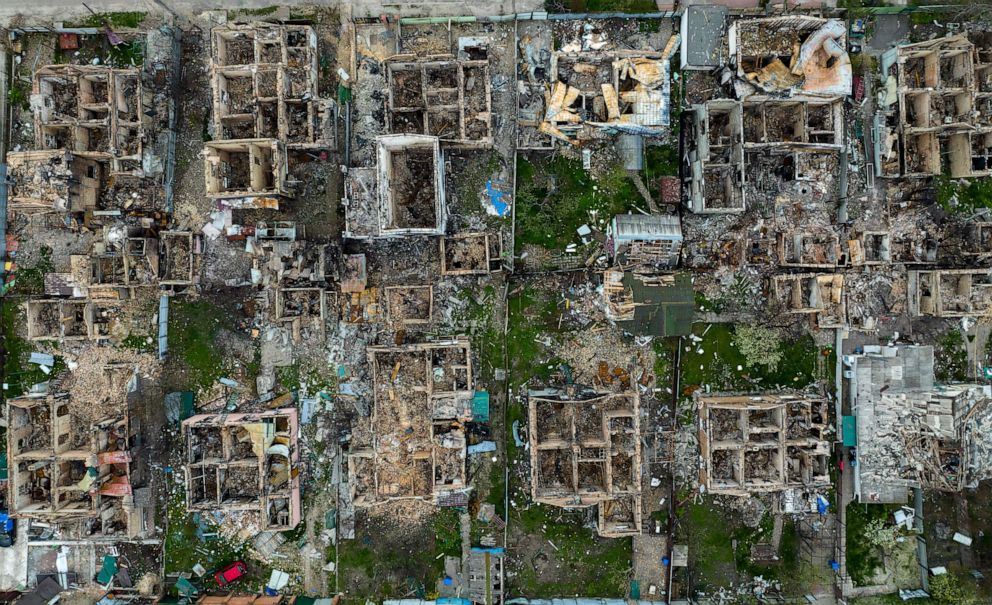
Destroyed houses are photographed in Irpin, on the outskirts of Kyiv, Ukraine, Saturday, April 30, 2022.
Emilio Morenatti/AP
At least 7,199 civilians have been killed by Russian campaigns in the last year, the United Nations said earlier this month. Another 11,756 have been injured. The true figure may be much higher, perhaps double, U.N. officials said.
U.S. Secretary of State Antony Blinken on Saturday said Russia’s actions amounted to crimes against humanity, among the most severe crimes that can be prosecuted at The Hague. He detailed the “execution-style killings of Ukrainian men, women, and children; torture of civilians in detention through beatings, electrocution, and mock executions; rape” and other crimes.
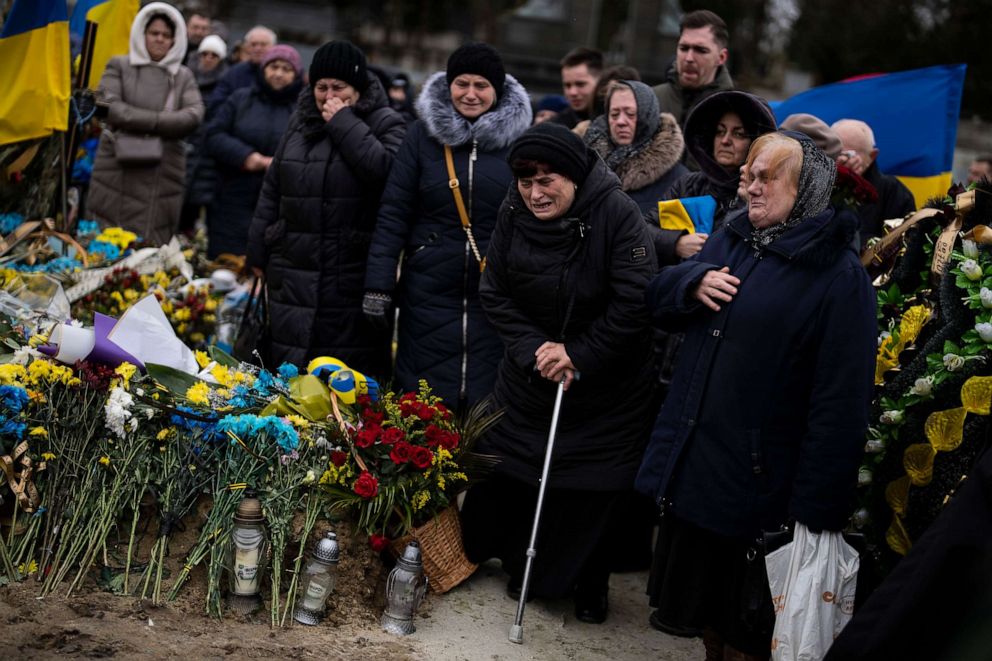
Maria, 70, second right, mourns during the funeral of her son Ruslan Zastavnyi, in Lviv cemetery, Ukraine, on Feb. 20, 2023. Zastavnyi joined the army in March 2022, died two weeks ago near Bakhmut.
Petros Giannakouris/AP
“There can be no impunity for these crimes,” Blinken said.
Vice President Kamala Harris, speaking in Munich on Saturday, said that “there is no doubt, these are crimes against humanity.”
Tens of thousands of troops have also been killed, although the number of casualties reported by Ukraine and Russia differ from those supplied by international observers.
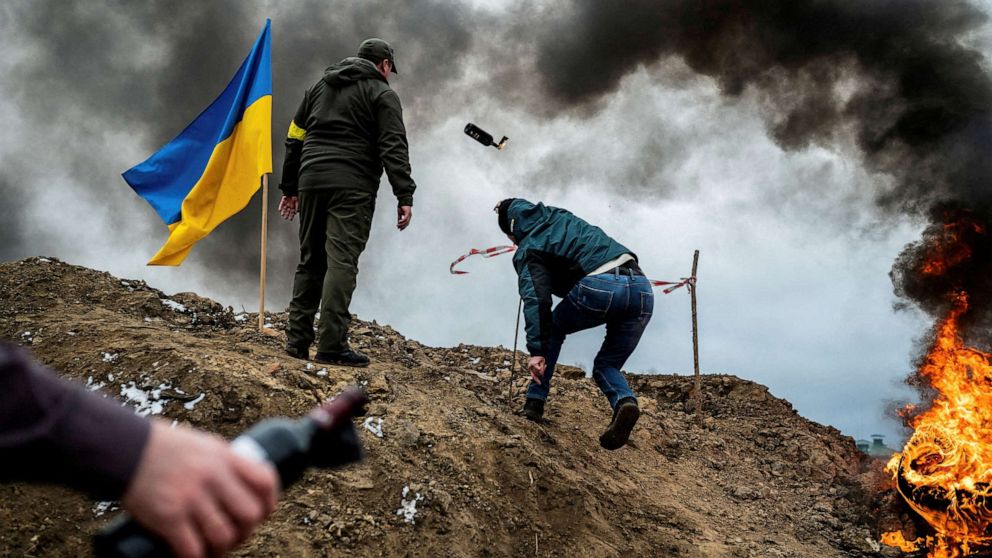
A civilian trains to throw Molotov cocktails to defend the city, as Russia’s invasion of Ukraine continues, in Zhytomyr, Ukraine, March 1, 2022.
Viacheslav Ratynskyi/Reuters
“We have to understand that information is a part of warfare — for at least 100 years, at least since World War I — so the fact that Ukraine and Russia are engaging in this, it’s not surprising,” Heidi Tworek, director of the Centre for the Study of Democratic Institutions at The University of British Columbia, told ABC News.
As the war has dragged on, U.S. and European allies have remained at a distance, offering aid, training and supplies. But earlier this month they authorized new weapons, including tanks, to be sent to Ukraine. Biden, on Tuesday, announced an additional $500 million in military assistance. Shipments of fighter jets may come in the future, if President Volodymyr Zelenskyy gets what he wants. He has — for the extent of the invasion — been seeking access to more powerful Western weapons.
But Putin has threatened to draw other countries further into the conflict if those military supplies keep coming. In his speech on Tuesday, he decried what he saw as Western intervention.
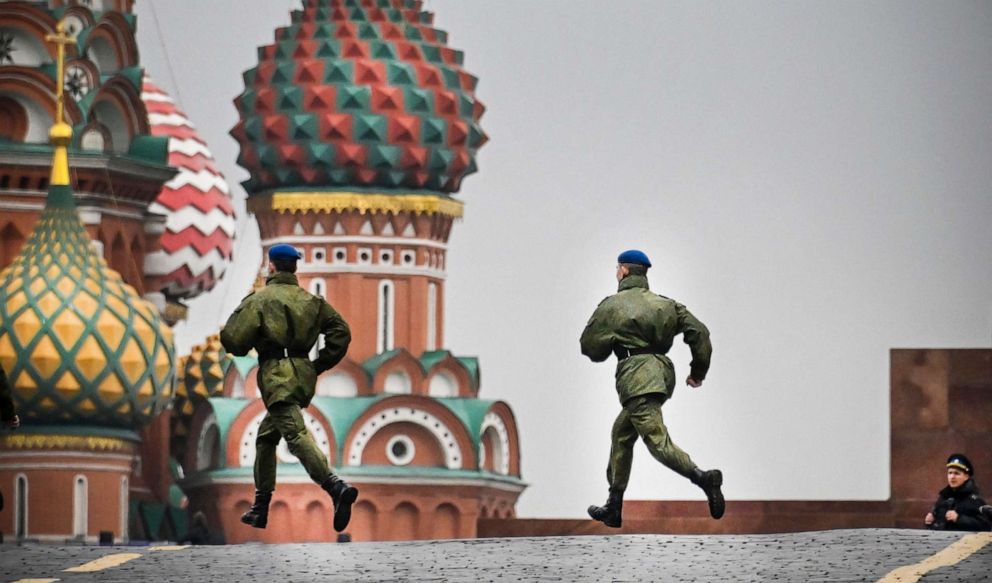
In this file photo taken on Sept. 29, 2022, Russian soldiers run along Red Square in central Moscow as the square is sealed prior to a ceremony of the incorporation of the new territories into Russia.
Alexander Nemenov/AFP via Getty Images
He also suspended a key U.S.-Russia nuclear treaty and threatened to restart nuclear tests. But even if Putin were to order a nuclear strike, it would be “highly unlikely” that his subordinates would follow through, Nikolayenko, the Fordham professor, said.
As the war enters its second year, Ukraine will no doubt continue seeking support from NATO allies.
“Putin assumes that the West has a short attention span,” Nikolayenko said. “If the West stops supporting Ukraine, Putin’s Russia will win, signifying the triumph of authoritarianism in world politics.”
Putin believes that he can win the war by exhausting both the Ukrainians the Western allies that are supplying them, said Arne Westad, a professor of history at Yale University.
“He is almost certainly wrong in this,” Westad said, “but that is his perspective.”
ABC News’ Shannon Crawford, Patrick Reevell, Morgan Winsor, Matt Seyler, Britt Clennett, Dragana Jovanovic, Edward Szekeres, Ben Gittleson, Justin Gomez, Sarah Kolinovsky, Molly Nagle, Isabella Murray, Cheyenne Haslett, Tom Soufi Burridge and Zoe Magee contributed to this report.